- Joined
- 25 June 2009
- Messages
- 14,755
- Reaction score
- 6,157
The obscure Boojum project is closely linked to the famous Snark, as both programs came to existence at the same time and resulted from the same development contract.
In October 1945 the U.S. Army Air Force began an ambitious long-term program to study and develop a large family of guided missiles, and in January 1946, Northrop submitted designs for turbojet-powered long-range cruise missiles. In March 1946, the USAAF awarded Northrop a development contract for project MX-775, covering the subsonic Snark (MX-775A) and the supersonic Boojum (MX-775B). In late 1947, the missile designator SSM-A-3 was assigned to the Snark (Northrop N-25), while Boojum became the SSM-A-5.
The Boojum supersonic intercontinental cruise missile (Northrop N-25B) was to compete head-to-head with North American Aviation's MX-771B Navaho II long-range missile. Although the initial Boojum design bore a lot of similarities to the Snark, the final XSSM-A-5 design was of a much different layout, featuring highly-swept delta-wings with turbojet engines near the wingtips. The studies envisioned a horizontal launch of the Boojum from a rocket-propelled sled, although air-launching off the back of a B-60 bomber (which at the time was expected to be a swept-wing, turboprop-equipped version of the B-36) or from a B-36 was apparently also considered as a secondary option.
After a subsonic climb to high altitude, the missile was to accelerate to supersonic speed and reach a final altitude of 21000 m (70000 ft). Two drop tanks were envisioned for the Boojum: one being a large subsonic wing, allowing for long-range subsonic cruise (see fifth attachment below), the other being a “slipper” tank that conformed to the Boojum's fuselage, allowing supersonic cruise. A celestial navigation system as developed for the SSM-A-3/SM-62 Snark was to guide the Boojum to the target at a maximum range of 8040 km (4340 nm).
Budget cuts in 1946 resulted in the cancellation of the subsonic Snark from the Army Air Force's missile program, while the Boojum was kept alive. Undeterred by this decision, Jack Northrop contacted Carl Spaatz and other Air Force officials to give the Snark a chance. He promised a two-year-and-a-half development phase with an $80,000 cost per missile for a 5000-unit production. Northrop's lobbying managed to get the Snark back on the tracks in 1947. Although both Snark and Boojum were redefined that year from the original 1945 specifications, the demise of the Boojum program soon came about. No XSSM-A-5 was ever built, and even to this day many details of the effort are still unclear. North American's Navaho II didn't fare any better.
After some protacted development, the XSSM-A-3 Snark finally flew successfully in April 1951. The SSM-A-3 Snark (later B-62,then SM-62) was launched off rails on a sled and remotely controlled by radio. Powered by an Allison J33 turbojet, it had swept wings mounted forward, and had a tailfin but no tailplane, using elevons on the wings for flight control. The air intake was under the belly. IT was also known as the WS-103A SAC Missile System.
As an aside, it is noteworthy that both the Snark and Boojum drew their names from the line of a Lewis Carroll' poem, "The Hunting of the Snark": "...for the Snark was a Boojum, you see..."
All that there is to know on the web about the Boojum (including the pics below) comes from two sources:
- www.designation-systems.net
- Scott Lowther's (Orionblamblam's) Unwanted Blog
Notes:
- Second attachment shows an early concept for the Boojum from about November 1947.
- All other images show the final configuration of the the XSSM-A-5.
In October 1945 the U.S. Army Air Force began an ambitious long-term program to study and develop a large family of guided missiles, and in January 1946, Northrop submitted designs for turbojet-powered long-range cruise missiles. In March 1946, the USAAF awarded Northrop a development contract for project MX-775, covering the subsonic Snark (MX-775A) and the supersonic Boojum (MX-775B). In late 1947, the missile designator SSM-A-3 was assigned to the Snark (Northrop N-25), while Boojum became the SSM-A-5.
The Boojum supersonic intercontinental cruise missile (Northrop N-25B) was to compete head-to-head with North American Aviation's MX-771B Navaho II long-range missile. Although the initial Boojum design bore a lot of similarities to the Snark, the final XSSM-A-5 design was of a much different layout, featuring highly-swept delta-wings with turbojet engines near the wingtips. The studies envisioned a horizontal launch of the Boojum from a rocket-propelled sled, although air-launching off the back of a B-60 bomber (which at the time was expected to be a swept-wing, turboprop-equipped version of the B-36) or from a B-36 was apparently also considered as a secondary option.
After a subsonic climb to high altitude, the missile was to accelerate to supersonic speed and reach a final altitude of 21000 m (70000 ft). Two drop tanks were envisioned for the Boojum: one being a large subsonic wing, allowing for long-range subsonic cruise (see fifth attachment below), the other being a “slipper” tank that conformed to the Boojum's fuselage, allowing supersonic cruise. A celestial navigation system as developed for the SSM-A-3/SM-62 Snark was to guide the Boojum to the target at a maximum range of 8040 km (4340 nm).
Budget cuts in 1946 resulted in the cancellation of the subsonic Snark from the Army Air Force's missile program, while the Boojum was kept alive. Undeterred by this decision, Jack Northrop contacted Carl Spaatz and other Air Force officials to give the Snark a chance. He promised a two-year-and-a-half development phase with an $80,000 cost per missile for a 5000-unit production. Northrop's lobbying managed to get the Snark back on the tracks in 1947. Although both Snark and Boojum were redefined that year from the original 1945 specifications, the demise of the Boojum program soon came about. No XSSM-A-5 was ever built, and even to this day many details of the effort are still unclear. North American's Navaho II didn't fare any better.
After some protacted development, the XSSM-A-3 Snark finally flew successfully in April 1951. The SSM-A-3 Snark (later B-62,then SM-62) was launched off rails on a sled and remotely controlled by radio. Powered by an Allison J33 turbojet, it had swept wings mounted forward, and had a tailfin but no tailplane, using elevons on the wings for flight control. The air intake was under the belly. IT was also known as the WS-103A SAC Missile System.
As an aside, it is noteworthy that both the Snark and Boojum drew their names from the line of a Lewis Carroll' poem, "The Hunting of the Snark": "...for the Snark was a Boojum, you see..."
All that there is to know on the web about the Boojum (including the pics below) comes from two sources:
- www.designation-systems.net
- Scott Lowther's (Orionblamblam's) Unwanted Blog
Notes:
- Second attachment shows an early concept for the Boojum from about November 1947.
- All other images show the final configuration of the the XSSM-A-5.

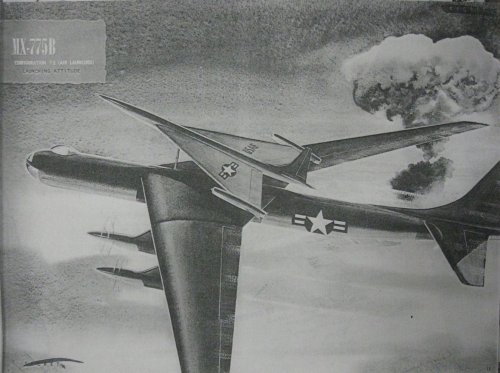
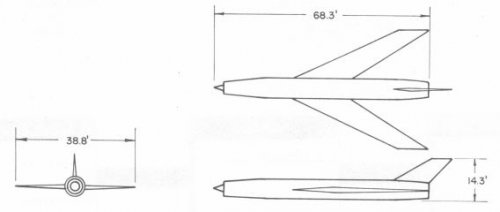
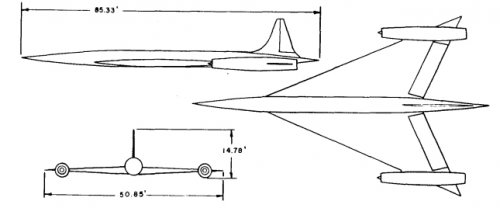
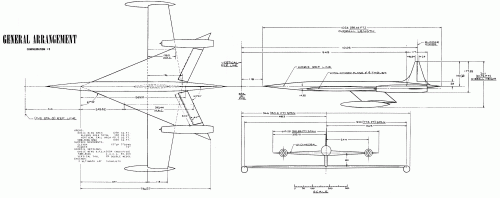
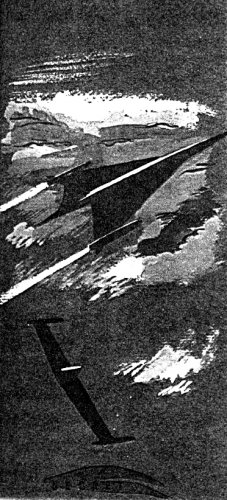
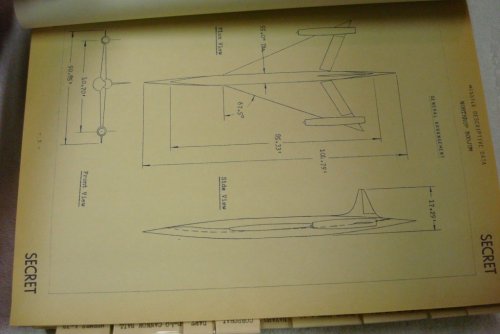
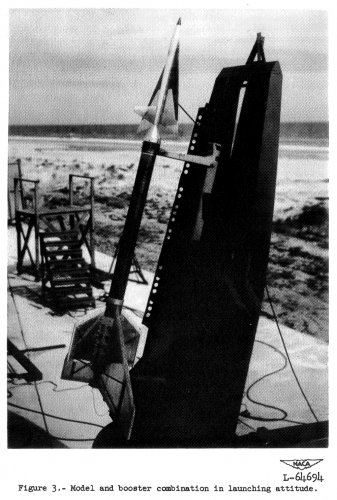
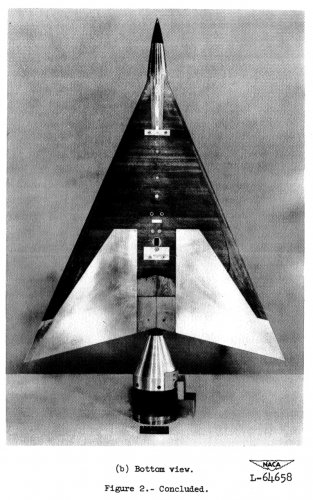
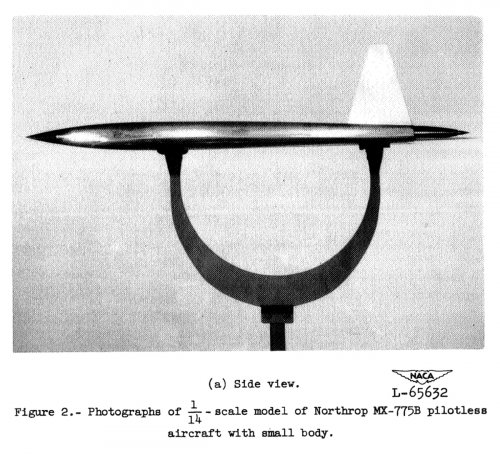
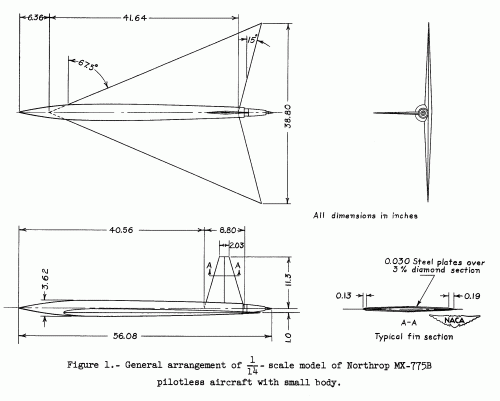
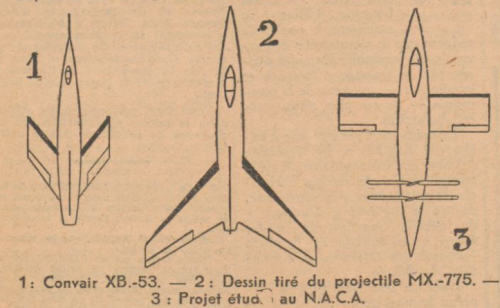
![Les_Ailes___journal_hebdomadaire_[...]_bpt6k3200352t_4.jpeg](/data/attachments/148/148550-1f560aa82cc76c5d49af3150a21701d9.jpg)